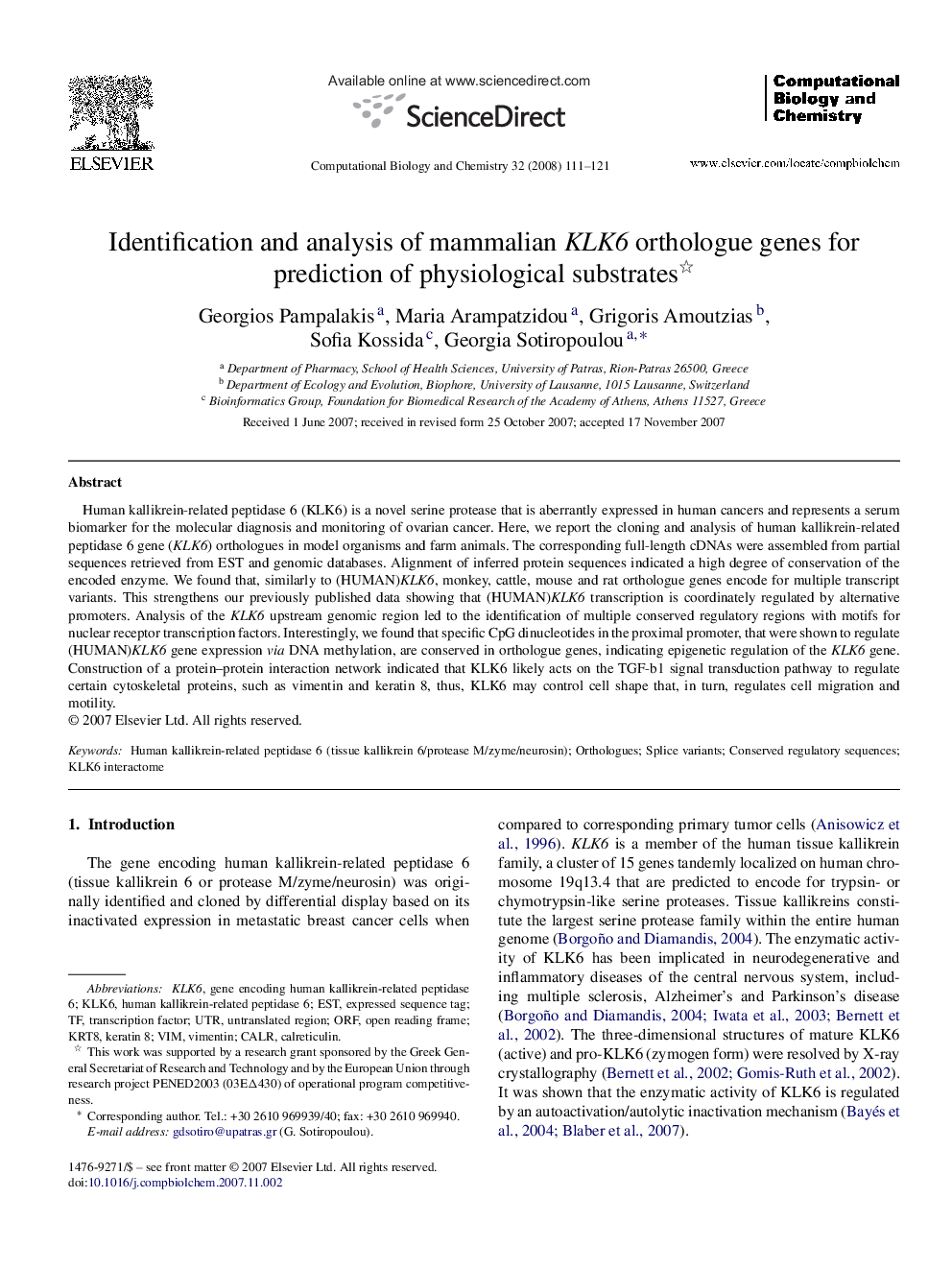| کد مقاله | کد نشریه | سال انتشار | مقاله انگلیسی | نسخه تمام متن |
|---|---|---|---|---|
| 15390 | 1409 | 2008 | 11 صفحه PDF | دانلود رایگان |

Human kallikrein-related peptidase 6 (KLK6) is a novel serine protease that is aberrantly expressed in human cancers and represents a serum biomarker for the molecular diagnosis and monitoring of ovarian cancer. Here, we report the cloning and analysis of human kallikrein-related peptidase 6 gene (KLK6) orthologues in model organisms and farm animals. The corresponding full-length cDNAs were assembled from partial sequences retrieved from EST and genomic databases. Alignment of inferred protein sequences indicated a high degree of conservation of the encoded enzyme. We found that, similarly to (HUMAN)KLK6, monkey, cattle, mouse and rat orthologue genes encode for multiple transcript variants. This strengthens our previously published data showing that (HUMAN)KLK6 transcription is coordinately regulated by alternative promoters. Analysis of the KLK6 upstream genomic region led to the identification of multiple conserved regulatory regions with motifs for nuclear receptor transcription factors. Interestingly, we found that specific CpG dinucleotides in the proximal promoter, that were shown to regulate (HUMAN)KLK6 gene expression via DNA methylation, are conserved in orthologue genes, indicating epigenetic regulation of the KLK6 gene. Construction of a protein–protein interaction network indicated that KLK6 likely acts on the TGF-b1 signal transduction pathway to regulate certain cytoskeletal proteins, such as vimentin and keratin 8, thus, KLK6 may control cell shape that, in turn, regulates cell migration and motility.
Journal: Computational Biology and Chemistry - Volume 32, Issue 2, April 2008, Pages 111–121